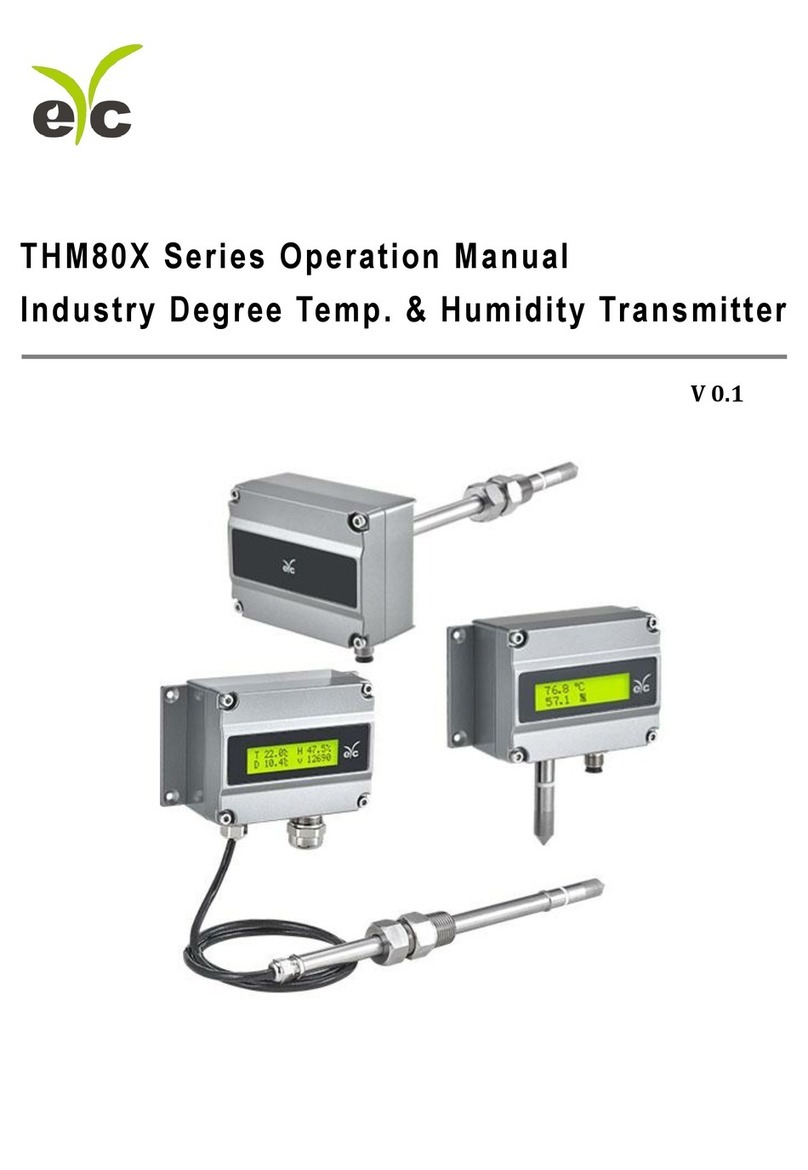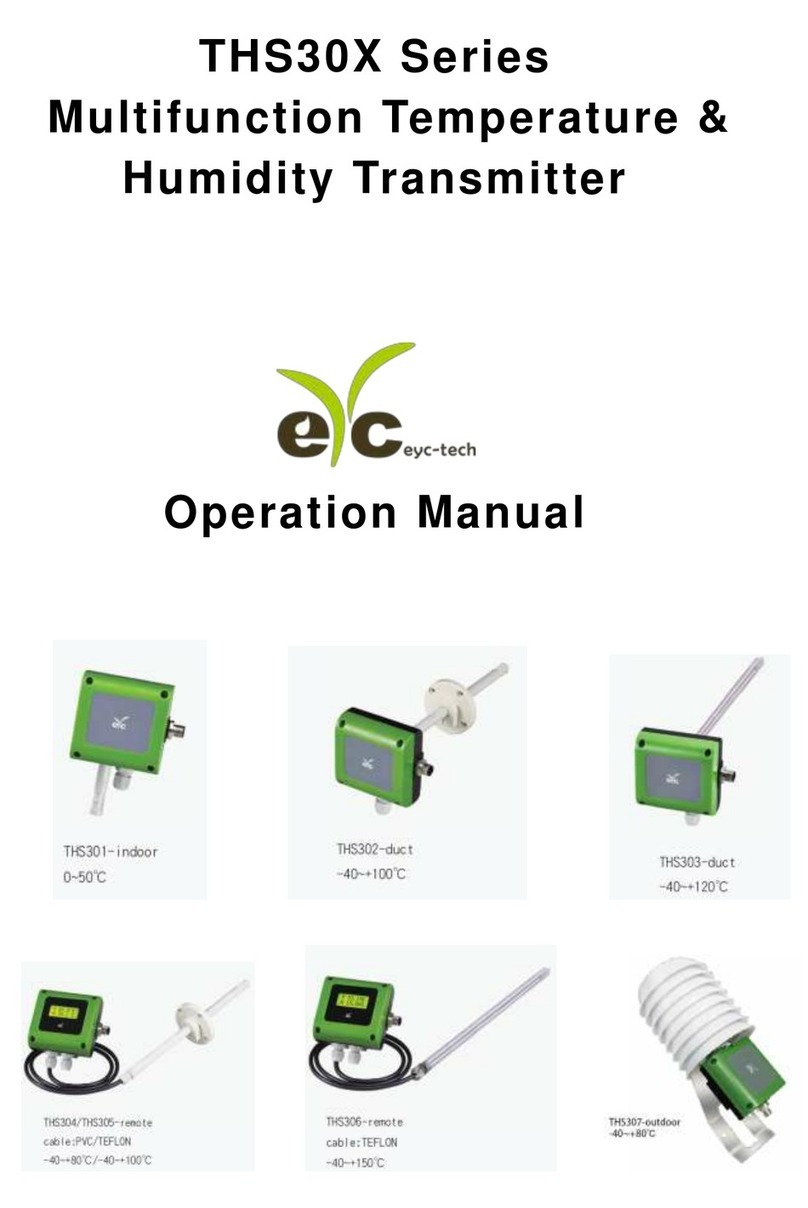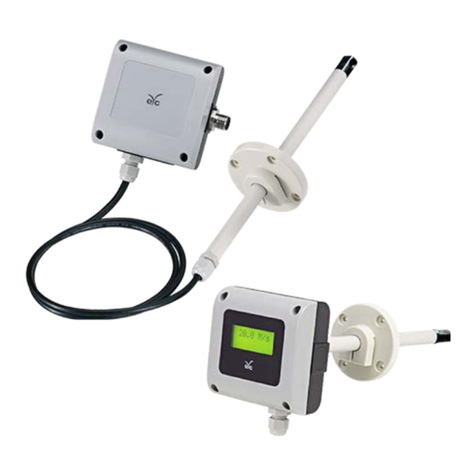
www.eyc-tech.com
Figure 1-1 block diagram of Transmitter principle
1.2.2 Intelligent circuit board
1) A/D conversion
The A/D conversion circuit uses a dedicated low-power integrated circuit
to convert the analog current output into a digital quantity by the demodulator
with an accuracy of up to 18 bits, which is supplied to the microprocessor as an
input signal.
2) Microprocessor
The microprocessor of the intelligent transmitter controls the A/D and D/A
conversion work, and can also complete self-diagnosis and realize digital
communication. During work, a digital pressure value is processed by the
microprocessor and stored as a digital to ensure precise correction and
engineering unit conversion. In addition, the microprocessor can also perform
sensor linearization, turndown ratio, damping time, and other functional
settings.
3) EEPROM memory
The EEPROM stores all configuration, characterization and digital
trimming parameters. This memory is non-volatile, so even if the power is
turned off, the stored data can be kept intact, so that intelligent communication
can be realized at any time.
4) D/A conversion
The D/A conversion converts the corrected digital signal sent from the
microprocessor into a 4-20 mA analog signal and outputs it to the loop.
5) Digital communication
Transmitters with the HART protocol can test and configure intelligent
transmitters via a single communicator. Or complete communication through
any host system host that supports HART communication protocol. The HART
































